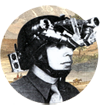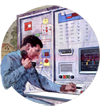Does anyoneknow how one goes about doing a background check?
We had a guy come in to volunteer a while ago, and he seemed okay. but until that point we hadn't had anyone come with us that the MoLLIE supervisor didn't know. Everyone had already worked with MoLLIE before. And for some reason, Jeanne and I thought the same thing at the same time after he left, 'what do we really now about this guy?'
It was surprising to me that in 5 years, the idea of doing background checks on people had not occured to those running a program that works regularly with children. That's like a no brainer, right? There's laws about this sort of thing, right? Well, from now on we are going to do checks on employees and volunteers, we just have to figure out how.












Comment from Mike Moore on April 22, 2008 - 11:53am
Have you looked at:
Lissa Explains it All -- HTML Help and Tutorial for Kids
http://www.lissaexplains.com/
(not just for kids...)